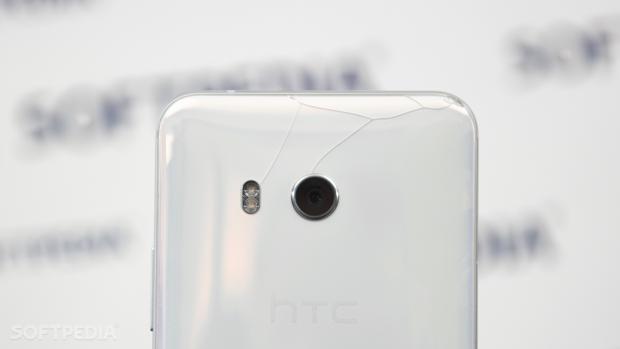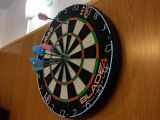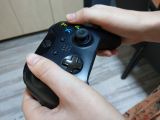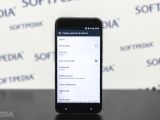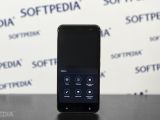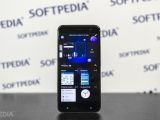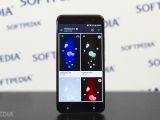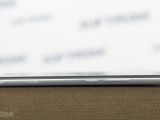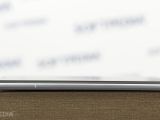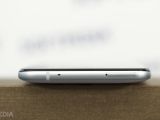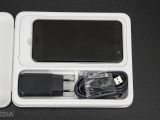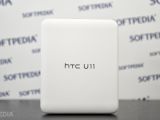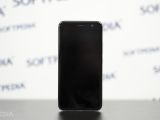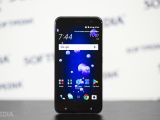“Squeeze for the Brilliant U.” This is the slogan that HTC used in mid-May when it officially took the wraps off its latest-generation model, once again trying to stay close to rivals Apple and Samsung with a device that boasts several innovative technologies.
As a successor to HTC 10, the new U11 competes against models that have already impressed in terms of sales, namely the Samsung Galaxy S8 Plus and the iPhone 7 Plus, with HTC already claiming one month after the launch that its new flagship is selling better than both the HTC One M9 and the HTC 10.
The device certainly comes with a pretty compelling feature package, and the all-new Edge Sense is the big star of the show. This feature allows you to squeeze the phone to access certain features or to launch user-defined apps, all without any physical button.
At the same time, HTC is betting big on the camera, with the company calling it the best camera on a smartphone ever, pointing to a test from DxOMark to prove its point.
Without a doubt, the HTC U11 looks super-yummy on paper, and this is the reason we just couldn’t resist the temptation and got one for a test. The version we’re reviewing is the white HTC U11 with dual-SIM and 64GB storage.
DESIGN and BUILD QUALITY
HTC has always been one of the companies that impressed with the design of its smartphones. The HTC One M8 for Windows, for example, was one of the models that received not only so much praise from almost everyone, but also a bunch of awards that confirmed it was one of the best-looking smartphones on the market.
And with the HTC U11, the company is aiming to do the same thing, though there’s something that you probably didn’t see coming. Look towards the end of this chapter to see what I mean.
First and foremost, let’s review the marketing material. The 5.5-inch is covered with Gorilla Glass 5, which is the best screen protection that you can have on a phone these days, and this is super-durable, meaning that it can withstand the majority of hits and scratches with no physical damage.
The front of the phone is quite common in the typical Android fashion, with the display taking most of the front fascia and a home button at the bottom that is also the home of the fingerprint scanner. The top bezel holds the front-facing camera, a speaker, a mic, and a notification LED.
What’s worth mentioning is that despite its rather dull front look, the HTC U11 actually features smaller bezels than the iPhone 7 Plus, with screen to body ratio of 71.4 percent versus 67.7 percent. Samsung’s Galaxy S8 remains the king of the bezel castle with 84 percent.
The SIM tray is placed at the top of the phone, while the right side holds the volume rocker and the power button, with the opposite side left without any buttons for a completely clean look. At the two lower parts of the sides, there are the pressure sensitive points that you can touch to enable Edge Sense.
“Gorilla Glass 3 on the back.In 2017.”
And now, the back of the phone. Even though it’s the icing on the cake, we’ve found it to be particularly disappointing for one single reason: it uses Gorilla Glass 3, which is unexpected to say the least for a flagship device that launches in 2017.
HTC uses all kinds of fancy words to describe how it built the back of the phone, saying it’s a liquid glass surface built with what it calls Optical Spectrum Hybrid Deposition. This means that the device can change its color depending on the light, so for the average Joe, it’s a shiny phone that interacts nicely with the sunlight.
The company says the curved look was achieved through bending the glass using extreme pressure, which in turn allowed it to achieve 3-axis symmetry that makes the back blend perfectly with the 3D glass and become “more secure and comfortable to hold.”
But let us disagree, especially with that secure part. Since it uses Gorilla Glass 3, the phone is actually prone to physical damages even when less powerful hits or shocks occur. And you know what happened during the test? That’s right, the back of the phone cracked in a way that we totally didn’t expect.
What we did was simply put the phone in the back pocket of our jeans and when resting against a wall, we heard a small cracking noise from the phone. It was that “bending” that HTC used to manufacture the phone which caused the damage. And as you can see in the photo, the phone is not as durable as you’d expect it to be.
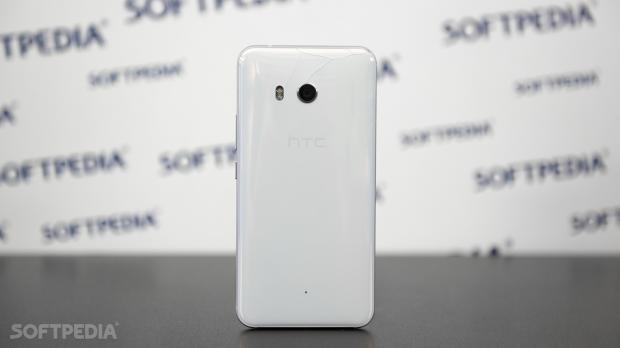
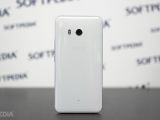
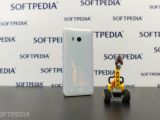
At 153.9 x 75.9 x 7.9 mm (6.06 x 2.99 x 0.31 in), the HTC is smaller than the iPhone 7 Plus, which measures 158.2 x 77.9 x 7.3 mm (6.23 x 3.07 x 0.29 in). And although it tips the scales at 169 grams and it’s lighter than Apple’s device which weighs 188 grams, it feels at least as heavy as the iPhone.
Overall, the HTC U11 indeed looks pretty good, but HTC failed exactly where you’d expect the least: the back of the phone. I still can’t believe that HTC decided to use Gorilla Glass 3 on the back for a 2017 phone, at a time when most manufacturers, including here its rivals, are going for the most durable materials and protections that exist on the market.
HARDWARE
The HTC U11 is a flagship, so it’s by no means supposed to make any compromises in the hardware section. This is why the device comes with specs similar to the high-end models on the market right now, and it all starts with the screen.
#Display
HTC says the 5.5-inch screen on the U11 is “our best display” and it features a Quad HD resolution (2560x1440 pixels). The HTC U11 uses Super LCD 5, which is a panel manufactured by S-LCD Corporation and which reduces glare by removing the air gap between the outer glass and the display itself.
HTC has long praised the benefits of Super LCD, including not only the quality of the screen, but also the lower power consumption, and this is why the company decided to stick with this type of display for its new flagship.
“Gorilla Glass 5.”
In real life, the display performs a little above the average, and we’d say it provides medium outdoor visibility, though we have expected better performance in direct sunlight given the praised capabilities.
Additionally, colors are indeed vibrant, and text and videos look a bit sharper, but I would have chosen an OLED display for the more saturated colors. On the other hand, HTC offers display color personalization, probably to compensate for the difference in performance versus AMOLED, but only the more advanced users would benefit from this feature.
#CPU, GPU, RAM, Storage
The HTC U11 is equipped with the same CPU as the Samsung Galaxy S8 Plus, namely the Snapdragon 835, but as compared to the South Korean model, it comes with a small boost.
The chip on the HTC is the MSM8998 which is an octa-core running in 4x2.45 GHz Kryo & 4x1.9 GHz Kryo configuration, while the Galaxy S8 is powered by the same CPU but with a small difference in clock speed: 4x2.35 GHz Kryo & 4x1.9 GHz Kryo. The difference is nearly impossible to notice in real life, and we’d even say the Galaxy S8 feels faster and more responsive thanks to the software optimizations introduced by Samsung.
The chip is paired with 4GB RAM on the 64GB storage version and 6GB RAM on the 128GB storage model. The latter is the one we’d recommend, especially because it provides extra performance, though once again, the noticeable difference as compared to its rivals is subtle, to say the least.
The HTC U11 features the same Adreno 540 GPU as the Samsung flagship, so the two are fairly similar in terms of hardware configuration.
As far as storage goes, you can order the U11 with either 64GB or 128GB, but microSD card support is offered with both a dedicated slot and a compatible SIM 2 slot which pushes maximum capacity to 512GB storage.
#Camera
HTC praises the U11 camera and points to benchmarks to highlight its full capabilities, explaining that at this point, it’s the best smartphone camera around.
And truth be told, the performance it provides is stunning, to say the least. HTC U11 comes with a 12-megapixel primary camera with f/1.7 and 1.4 um pixel size, dual LED flash, and 4K video recording.
HTC implemented several technologies to aid the camera, including its signature UltraSpeed Autofocus and a multi-axis optical and electronic stabilization system for sharper photos regardless of lighting conditions.
And this does pay off. Photos shot in perfect lighting are impressive, with super clear details, which is living proof that the focus system works flawlessly. Colors are vivid and look natural in 99 percent of the photos, and the white balance is most often correctly configured.
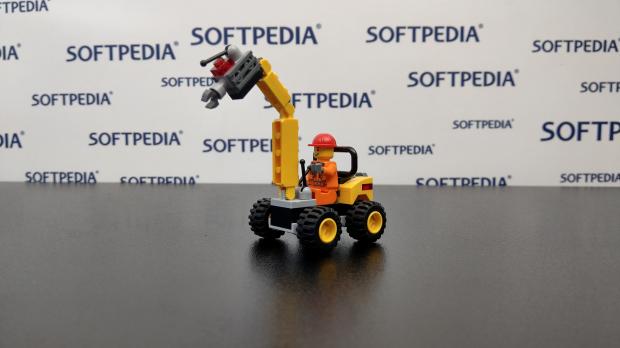


Users with photography skills can also turn to the pro mode, which allows them to manually adjust certain camera capabilities and settings, with support for 32-second long exposure and RAW format support for more post-processing edits.
Of course, you also get the extras like slow motion video support, hyper-lapse, panorama, 4K video recording and face detection.
The front-facing camera is a monster as well, as it comes in the form of a 16-megapixel unit with f/2.0 aperture, auto selfie to take a shot when smiling, HDR boost, and 1080p video recording.
As with every new phone, we’re now working on an in-depth camera review, and we’ll update this section when it goes live.
#Battery
The battery on the HTC U11 is a 3,000 mAh unit with Quick Charge 3.0 support and a USB Type-C connector. The battery is non-removable.
HTC says the battery can provide up to 24.5 hours of continues talk time or a maximum of 14 days of standby time, mostly thanks to its power saving modes that kick in when the battery drops below a certain threshold.
In reality, the best we could get was 28 hours per charge with average use, though you should expect the battery to last longer if you don’t use the camera for video recording or playing games. Also, using the speakers also provides a noticeable battery drop, but you certainly need that when playing games or watching videos.
Charging doesn’t take more than 80 minutes thanks to the Quick Charge 3.0 mode, though it’s worth mentioning that the phone feels pretty hot during the whole time. Not “it’s going to explode” kind of hot, but after the Note 7 saga, we’d rather keep an eye on our phones during charging.
#Other features
First and foremost, it’s the fingerprint sensor. As compared to Samsung, who moved the sensor to the back of the phone, and to Apple, who struggles to embed it into the screen, HTC picked the more traditional approach, so it offers the sensor integrated into the home button on the front of the phone.
Performance is just like you’d expect it to be, though this classic approach somehow makes the phone feel old as compared to all its rivals. At the same time, it also contributes to the rather outdated front design, despite all the refinements that HTC describes as groundbreaking innovations in its marketing material.
But there is one other thing that deserves to be praised on the HTC U11: the sound. HTC spent a considerable amount of time to improve the quality of the sound, and the results are amazing, both when using the headphones and without them.
Before anything else, it’s worth noting that the device does not feature a headphone jack, but a USB Type-C port with an adapter in the box in typical Apple fashion.
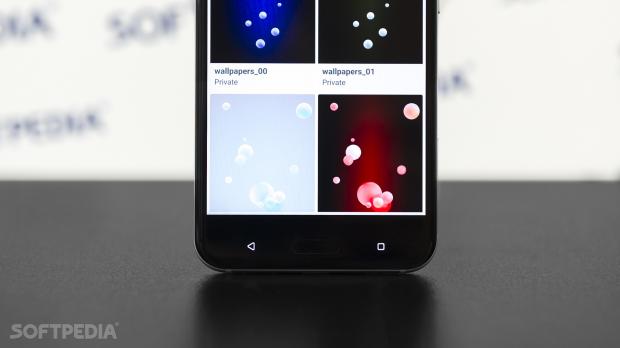

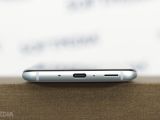
And though you can use third-party headphone with the device, we recommend sticking with HTC’s because the sound quality is amazing. HTC uses USonic, a new technology that combines active noise canceling with personalized audio profiles that users need to configure when first connecting the headphones.
This translates to a pretty unique experience, with external noise eliminated almost entirely, but with strong bass and impressive clarity that is perfectly tailored to each user. We recommend paying attention to the configuration wizard when setting up the headphones because each setting can have an impact on the final audio experience you get.
And then, it’s the non-headphone audio. The U11 comes with no less than 4 microphones for 3D audio recording, but also with HTC’s so-called BoomSound Hi-Fi edition, which is a fancy name for a technology whose role is to improve clarity and boost. The phone obviously features dual speakers, with the top speaker acting as a tweeter that includes an acoustic chamber dedicated to highs and mids. The lower speaker plays the role of a subwoofer with deeper bass tones.
SOFTWARE
HTC U11 runs HTC Sense based on Android 7.1 Nougat with several software optimizations that you can see across the entire operating system.
Since starting testing the HTC U11 and after testing the reactions of several Android fans when trying out the phone, the software capabilities divide people into two different categories: those who like it and those who prefer the stock Android experience that typically comes on Google’s Pixel.
Most people who prefer custom ROMs or a more user-friendly approach seem to like HTC’s approach, though we’re not the biggest fans, primarily because of the rather unattractive interface that we still don’t consider as glossy and eye-candy as the one of the flagship Samsung phones.
HTC Edge Sense is definitely a nice touch, and we’ve kept this for the software section because we want to discuss more about the options it provides. HTC clearly bets big on this feature to increase sales of the U11, but we’ve been rather unimpressed with it, mostly because this doesn’t seem the kind of feature that you use every day. And let’s detail on that.
Squeezing the phone lets you launch an app or phone feature, such as the camera, and you are allowed to configure the squeezing intensity, thus making sure that everyone can use it. Options, however, are limited, and you can only configure it to launch the camera, the assistant, an app, take a screenshot, or turn the flashlight on or off or take a screenshot.
More advanced customization is not available, so basically Edge Sense is a shortcut to specific features or apps, and we’d like more control, such as being able to trigger an action, like starting a call with a specific contact or opening a WhatsApp conversation.
HTC U11 is one of the first phones that works with Alexa, but you need to get it from the Google Play Store, and also with Google Assistant. Both can be launched from Edge Sense, but also with voice once you set them up correctly.
The U11 also comes with the HTC Sense Companion, which monitors your activity and provides suggestions to improve your experience, but because we like to do most things manually, we disabled it soon after it started bothering us with notifications every now and then.
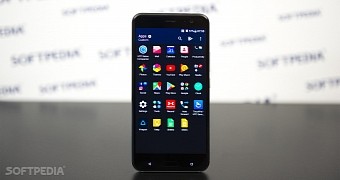
 14 DAY TRIAL //
14 DAY TRIAL // 